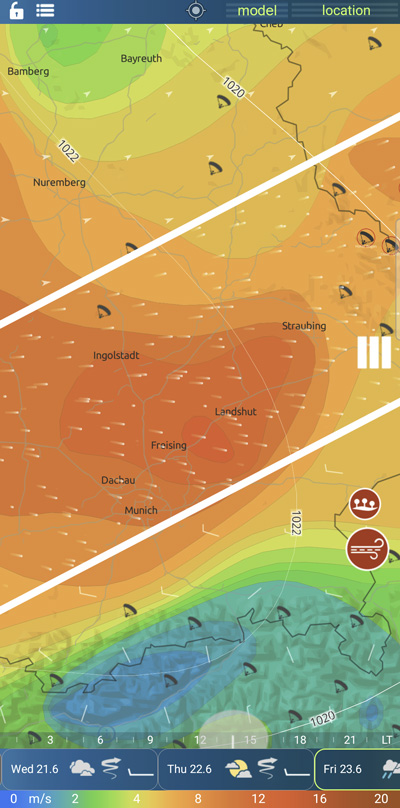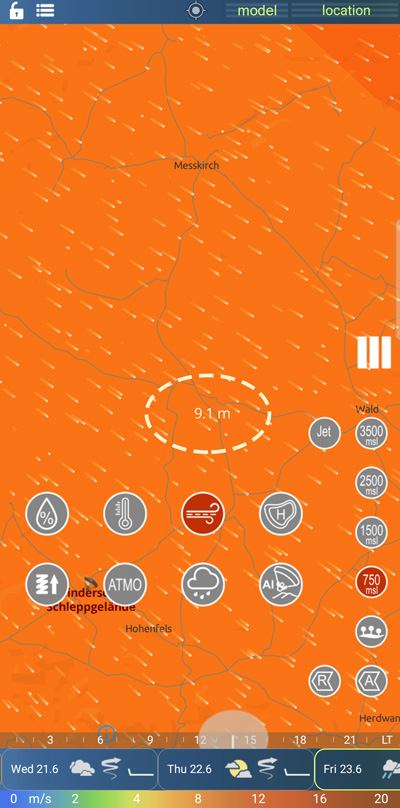How to do it
Select the main map icon for wind.
A color map is displayed in the basic range 0..20 m/s (Units can be set in "settings".)
The colors are tuned with an emphasis on the resolution of small speeds.
On the right side, you can choose a map for a specific height.


Wind is primarily caused by the uneven heating of the Earth's surface by the Sun. Here's how wind is generated at the Earth's surface and in the higher levels of the atmosphere:
Surface Wind:
Differential Heating: The Sun heats the Earth's surface unevenly due to variations in solar radiation absorption. Different surfaces, such as land and water, absorb and retain heat differently, creating temperature variations.
Pressure Gradient: The temperature variations create differences in air pressure. Warmer air is associated with lower pressure, while cooler air is associated with higher pressure. This creates a pressure gradient between areas of high and low pressure.
Air Movement: Air moves from areas of high pressure to areas of low pressure, creating horizontal wind. The greater the pressure difference, the stronger the wind.
Upper-Level Wind:
Pressure Gradient Force: In the upper levels of the atmosphere, wind is influenced by horizontal pressure gradients similar to surface wind. Pressure variations at different heights create pressure gradient forces that drive air movement.
Coriolis Effect: As air moves horizontally, the rotation of the Earth causes the Coriolis effect, deflecting the air to the right in the Northern Hemisphere and to the left in the Southern Hemisphere. This leads to the formation of large-scale wind patterns, such as the prevailing westerlies.
Jet Streams: Jet streams are high-speed, narrow air currents that flow in the upper levels of the atmosphere. They are driven by temperature contrasts and pressure gradients between different air masses. Jet streams can significantly influence weather patterns and the movement of weather systems.
Overall, wind is a result of the complex interactions between temperature, pressure, and the Earth's rotation. It plays a crucial role in shaping weather patterns and can have a significant impact on aviation, energy production, and other aspects of human life.